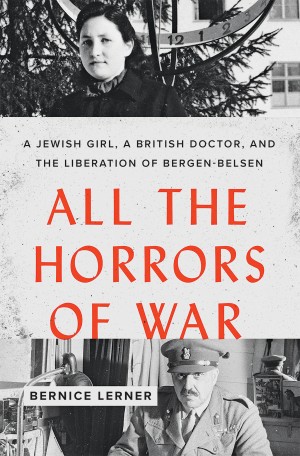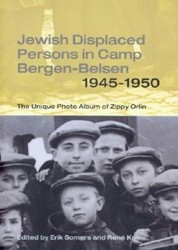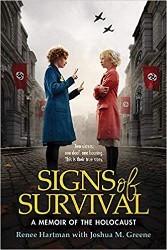More than 60 years after the end of the Nazi regime, thecrimes against humanity committed during the Holocaust continue to evokehorror and disgust among most civilized people. As a result, interestin the Holocaust and related topics continues unabated, throughout theUnited States and Europe. Even if we discount memoirs by survivors(which is not wise, considering the number of new memoirs beingpublished annually), the literature is vast and still growing. Accordingto a recent count, the New York Public Library holds 150 books onconcentration camps published in English since 1992 (the latest date ofmaterial included in the final supplement of my Bibliography on Holocaust Literature).The amount of material exclusively focused on the camps, limited onlyto English, totals more than 500 items. If these figures are added tomaterials in languages other than English — especially Polish andGerman — the grand total could be well over 20,000 items. It is noteworthythat 30 years ago, historian M.R.D Foot claimed the total was over7,000 for the Auschwitz camp alone.
This bibliographic introduction is provided as a way tojudge some of the more recent and historically significant literature onthe Nazi Concentration Camps, a terror system that included well over3,000 different camps. It must be understood that each camp was unique,even though all shared some common characteristics. Even the leastsatisfactory book on the subject may have a unique insight on specificcamps or on the concentration camp system as a whole.
Within the large pool of literature on the Holocaust, I rate Paul Martin Neurath’s The Society of Terroras a must-read. Neurath, an Austrian Jewish Social Democrat, spent mostof the period between the Anschluss of Germany and Austria (March, 1938and 1941) behind the barbed wire fences of Dachau and Buchenwald. Bothsites were pure concentration camps — in other words, camps in whichpolitical prisoners were held and worked to death. The text, composedfrom memory while in exile in Sweden in 1941, formed the basis forNeurath’s dissertation in Sociology at Columbia University. He went onto a distinguished teaching career, which continued until his death onSeptember 3, 2001.
The book compares well with other early texts on the camps, notably with Christopher Burney’s The Dungeon Democracy,which describes Buchenwald from the perspective of an interned Briton. Both books deal extensively with the social stratification amongst theprisoners, such as the “superiority” of a criminal (socalled Green, fromthe color of the triangle that the Nazis assigned inmates based ontheir “crime) over a Communist (Red), the superiority of a Communistover an Asocial (Black) or a Jehova’s Witness (Violet), and tehsuperiority of both of those over a Jew (Yellow), Gypsy (Brown), orHomosexual (Pink). Both books explain the use of terror and violence bythe SS as a means of demoralizing and dehumanizing. Neurath’s book ismore clinical and thus, perhaps, more reliable from a historical pointof view, but both books agree on most points of analysis.
Despite the academic background of Neurath’s book, it isrelatively easy reading, assuming one has a strong constitution. Thetext is free of jargon and uses none of the expected psychological orsociological terminology. A careful reader will clearly come away with abetter understanding of both the internal and external structure of thecamps and how they functioned within the context of the Nazitotalitarian state.
Sybille Steinbacher’s Auschwitz: A History is a moreterse and spare historian’s account of the Auschwitz concentration/slave labor/murder camp. Again a number of similar books already exist,but this one fills a niche: it is a short primer on the history ofAuschwitz in all its manifestations written (originally for a Germanaudience) to debunk the lies of Holocaust deniers such as RobertFaurisson and David Irving. Even with such a limited purpose, the bookmanages to enlighten. The author discusses the development of Auschwitzas a German civilian settlement, mainly inhabited by camp overseers andtechnicians, in the attached factories of the I. G. Farben Verlag, whichreached a population of 6,000 by 1943.
There are two minor drawbacks. First, for a volume writtento set the record straight, there are no source references and only alimited (52 items) bibliography. There is no citation of primarysources, at least none whose provenance can be specifically trackeddown, and no critical sense of which sources are more useful and whichare less useful. Second, as the book was originally written in German,the flow of the English used isn’t as smooth as that of other books. Ihad to reread a number of passages before completely understanding theirfull meaning and ramifications. I still recommend the book, especiallyto readers looking for a short overview. However, if you are looking fordetail and careful documentation, then look elsewhere.
A substantially different look at the concentration camps is provided by Ben Shephard’s After Daybreak.In recounting the liberation of Bergen Belsen by the Royal Army onApril 12, 1945, he attempts to demystify those first weeks of freedom.Shephard’s point of departure is the fact that 14,000 of the almost60,000 inmates freed when the camp was captured by the British diedwithin two weeks of liberation. That is an astounding 24% of the inmatesliberated. Most historical accounts focus on post-liberation deaths asthe dire result of Nazi persecution, mainly malnutrition, that derivedfrom the Nazi policy of “vernichtung durch arbeit” (exterminationthrough labor). While Shephard does not deny the significance of thisfactor, he also notes the crucial errors made by Allied forcesimmediately after the liberation.
Using a panoply of published and herertofore untapped oralsources — mainly reports by liberating soldiers and medical personnelstationed in Belsen in those first few weeks — Shephard is able toreconstruct virtually every decision, both good and bad, made by theAllied forces controlling the camp. The sad but true reality is thatAllied policy of keeping German war crimes a virtual secret leftmilitary personnel with neither sufficient understanding nor sufficientresources to deal with the mass medical problems that were bound tooccur upon liberation. It might also be noted that losses at Belsencompare favorably with losses at other camps: approximately 40% (each)of the liberated inmates at Buchenwald and Dachau, which were liberatedby the U.S. Army at the same time, died. This was not a matter of theBritish being uncaring or inept, but, as noted, the direct consequenceof the policies espoused by the senior Allied military and politicalleadership. Indeed, on balance, the British come off quite well inShephard’s account of the liberation. Perhaps not as well as theAmericans, but certainly better then the French or the Russians. Some ofthe negativity in regard to the British may derive from post-liberationpolicies, when the status of the former Jewish concentration campinmates, referred to as Displaced Persons, became enmeshed with theissue of Palestine/Eretz Israel.
It is interesting to see how authors view the camps 60 yearsafter the end of the Holocaust. All three of the books reviewed herebring fresh new perspectives to the subject matter and thus allow us toassess the continuing importance of Holocaust studies, in the WesternWorld. The question remains, however, whether or not this continuinginterest in the Holocaust can be transformed into action againstcontinuing acts of genocide and mass hatred.





